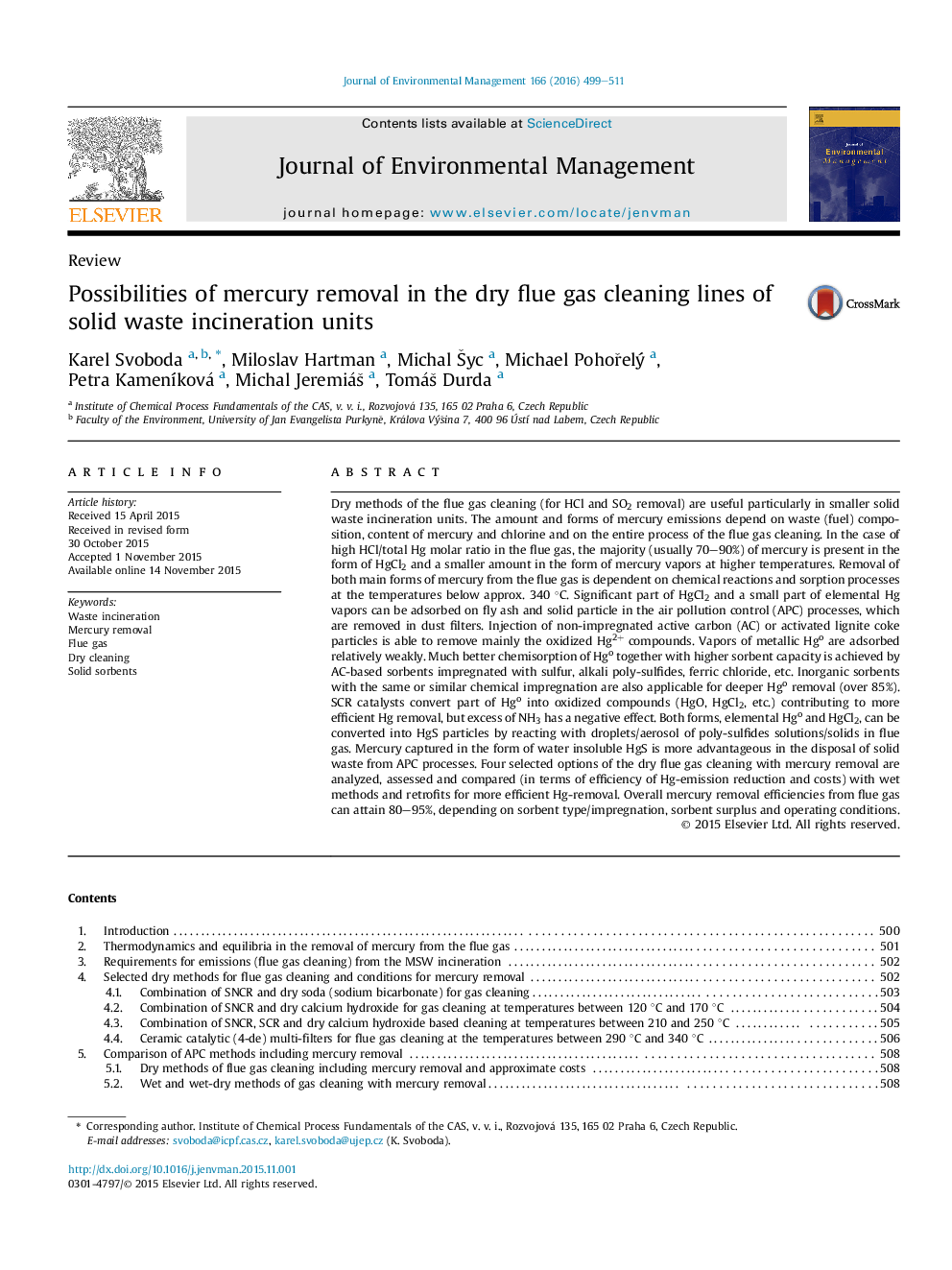| Article ID | Journal | Published Year | Pages | File Type |
|---|---|---|---|---|
| 7481406 | Journal of Environmental Management | 2016 | 13 Pages |
Abstract
Dry methods of the flue gas cleaning (for HCl and SO2 removal) are useful particularly in smaller solid waste incineration units. The amount and forms of mercury emissions depend on waste (fuel) composition, content of mercury and chlorine and on the entire process of the flue gas cleaning. In the case of high HCl/total Hg molar ratio in the flue gas, the majority (usually 70-90%) of mercury is present in the form of HgCl2 and a smaller amount in the form of mercury vapors at higher temperatures. Removal of both main forms of mercury from the flue gas is dependent on chemical reactions and sorption processes at the temperatures below approx. 340 °C. Significant part of HgCl2 and a small part of elemental Hg vapors can be adsorbed on fly ash and solid particle in the air pollution control (APC) processes, which are removed in dust filters. Injection of non-impregnated active carbon (AC) or activated lignite coke particles is able to remove mainly the oxidized Hg2+ compounds. Vapors of metallic Hgo are adsorbed relatively weakly. Much better chemisorption of Hgo together with higher sorbent capacity is achieved by AC-based sorbents impregnated with sulfur, alkali poly-sulfides, ferric chloride, etc. Inorganic sorbents with the same or similar chemical impregnation are also applicable for deeper Hgo removal (over 85%). SCR catalysts convert part of Hgo into oxidized compounds (HgO, HgCl2, etc.) contributing to more efficient Hg removal, but excess of NH3 has a negative effect. Both forms, elemental Hgo and HgCl2, can be converted into HgS particles by reacting with droplets/aerosol of poly-sulfides solutions/solids in flue gas. Mercury captured in the form of water insoluble HgS is more advantageous in the disposal of solid waste from APC processes. Four selected options of the dry flue gas cleaning with mercury removal are analyzed, assessed and compared (in terms of efficiency of Hg-emission reduction and costs) with wet methods and retrofits for more efficient Hg-removal. Overall mercury removal efficiencies from flue gas can attain 80-95%, depending on sorbent type/impregnation, sorbent surplus and operating conditions.
Related Topics
Physical Sciences and Engineering
Energy
Renewable Energy, Sustainability and the Environment
Authors
Karel Svoboda, Miloslav Hartman, Michal Å yc, Michael PohoÅelý, Petra KamenÃková, Michal JeremiáÅ¡, TomáÅ¡ Durda,
